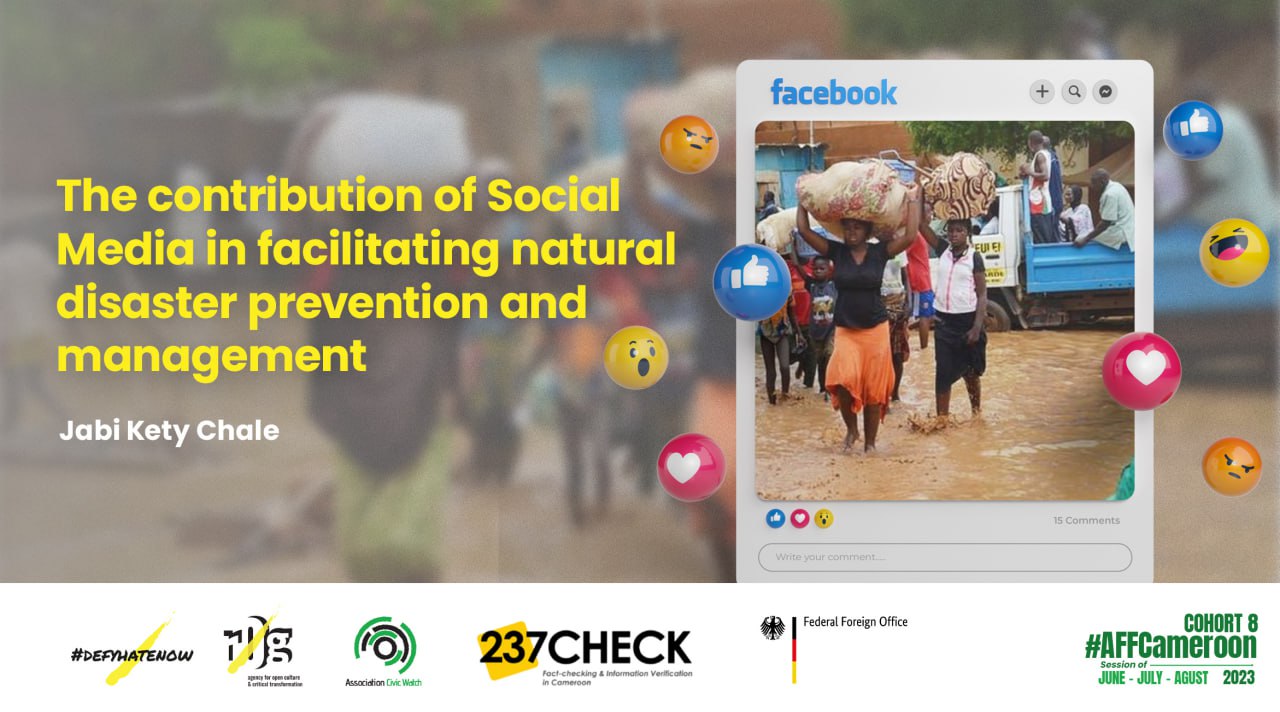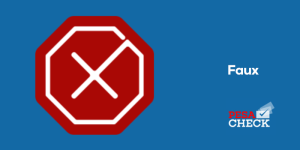Introduction
The Merriam Webster dictionary defines Natural disaster as “a sudden and terrible event in nature that usually results in serious damage and many deaths”. There are climate related disasters such as floods, drought, storms, landslides and non-climate disasters such as earthquakes, volcanic eruptions, tsunamis etc. When natural disasters occur, there is a need to ensure immediate response, safety as well as to prevent potential hazards or reduce the impact, this brings about the concept of disaster risk management. The article “what is disaster management? Understanding emergencies from prevention to mitigation” Published by Tulane university-United States,(2021), opines that “disaster risk management is a process of effectively preparing for and responding to disasters. It involves strategically organizing resources to lessen the harm that disasters cause”.
In recent times, Cameroon has been prey to several natural disasters such as floods, landslides, hitting the country from almost every corner. Some of the most affected regions are the South West, the littoral, the Far north, the center, the North West and the west regions. These natural occurrences have led to loss of lives and properties, injuries, displacement of persons and caused a set back to development. According to the United Nations, most developing countries are more vulnerable and are unprotected against natural disasters, hence it is pertinent to explore startegies to ameliorate the situation, enhance mechanisms that have proven beneficial, and work on those lacking. The focal point of this report is to highlight an aspect of disaster management in Cameroon that has been useful which is social media. Social media is very instrumental in creating awareness and countering disinformation during and after disasters. Hence, this report seeks to establish the resourcefullness of social media in natural disaster management in Cameroon, with reference to the recent floods that occured in Limbe in the months of June, July, August 2023, the Buea town flood of 18 March 2023 and the landslides at the tiko-Douala stretch of road in July 2022.
Body
When disasters occur, communities have to respond and adapt to the situation, at thesame time prepare for and prevent potential hazards. This brings about two aspect of disaster management, disaster adaptation and prevention.
- Disaster adaption
(Jai et al, 2021) in the article “Adaptation to Disaster Risk-An Overview”, Suggests that “the content of adaptation involves the process of natural and sudden disaster impact assessments. The article goes further to say that adaptation includes both moderating harm and exploiting beneficial opportunities.
One of the primary focus when hazards occur is to ensure safety and reduce vulnerability, this is usually done by spreading news of where and how the hazard is ongoing, so that those around the area deal cautiously and those who are not around the area should not attempt going there. From June to August 2023, the city of Limbe has witnessed several floods killing and injuring many, when these flooding situations occur, even before the mainstream media reports on it, it always spread on social media with denizens, bloggers and journalists constantly giving news of the state of affairs. In some occasions they even highlight the precise neighborhood affected, this helps to inform the population on the accessible and non accessible areas. An instance of a communique of the Limbe City mayor uploaded by the Cameroon News agency, announcing a flood situation, highlighting the affected localities, requesting persons not to go there and does already there to evacute.
On July 9 2022, the tiko-Douala stretch of road witnessed a flooding situation which blocked the road, posing a great danger to road users. Popular blogger and journalist, Mimi Mefo posted a video of the situation with a warning statement, “Anybody going to Douala this morning should not leave the house for now, roads are inaccessible”. The video had 60k views, 1k likes, 482 comments and 462 shares, the post created awareness to many and helped in reducing the vulnerability and impact of the situation. Adjusters international in an article titled “The Importance of Social Media Before, During and After a Disaster” buttress that “Social media during a disaster provides up-to-the-minute news information — road closure updates, evacuation routes, designated help areas, shelter locations, and more”
Another key aspect of disaster adaption is response; how to immediately assist those affected be it emergency and medical response, humanitarian and economic assistance, or pyscho-social support. These response in most situations comes from government institutions, local and international NGOs, health institutions and community members. And if an effective response has to be made, then there needs to be adequate information of the status quo and social media has been resourceful in providing these information. When the town of Buea witnessed torrential floods on 18 March 2023, the effects of the flood was painted across almost every social media platform, constantly highligting how people’s houses and businesses have been destroyed. Facebook accounts such as Mimi Mefo, CBS radio, Beta tinz uploaded videos showing the properties that have been destroyed with victims explaining how frustrated they have become.
In July 21 2023, Popular pidgin blogger Beta tinz uploaded a video of denizens in Limbe, transporting people and children at the roof tops of houses to keep safe from the floods. Another video had emerged on TikTok of a denizen seeking for help given that they were stranded were they were as the roads were blocked by floods hindering movement.
As seen above on the second picture, denizens can also use social media to inform their family, friends and the community of their well being and safety. When these information spread on social media, it makes it easy for institutions and communities to identify the statistics of those safe and those injured, to also know how and where to assist, hence facilitating response during disaster periods.
Humanitarian, economic and psycho-social support is pivotal when natural hazards occur, social media not only provides information to institutions for response, but equally provides information to the victims on how to access these assistance, and equally gives room for accountability of funds and resources allocated to the affected persons. In July 2023, Secondary education minister Proffesor Nalova Lyonga disbursed the sum of 10million Francs CFA to the Limbe city council to assist the victims of the flooding disaster, later on, the Limbe city council used their facebook page to announce to the public the date, venue and time for distribution, as well as communities eligible. After the distribution, they still used their Facebook page to account for the resources distributed highlighting some details of the distributed items.
- Disaster prevention/mitigation
The article “Disaster prevention and mitigation” published by Public safety Canada(2020), puts that “disaster mitigation measures are those that eliminate or reduce the impacts and risks of hazards through proactive measures taken before an emergency or disaster occurs”. Presently, there are reports of increased climate change globally and predictions of more catastrophic hazards to come. United Nations alarms that the world will go from around 400 disasters recorded in 2015 to about 506 a year by 2030. Hence governments and non governmental organizations are implementing strategies ahead of time to prevent these hazards from occurring or to reduce the impact and vulnerability when they do occur, Cameroon Inclusive.
The department of national Meteorology in Cameroon has consistently been releasing weather forecast on their Facebook page, constantly highligting areas prone to torrential rains and floods and what denizens can do to keep safe. The national climate change observatory (ONACC) has also been releasing information on social media as concerned to communities with high risks of flood and landslides. Blogs and journalism platforms have equally been sharing the information released by ONACC. The spread of these information has not been limited to blogs or journalism platforms only, as some denizens took upon themselves to share on their Facebook accounts and watsup groups.
The recent floods in Limbe has provoked conversations and debates online from Cameroonians who have being filing in personal contributions as to what can be done to prevent many of such occurrences. On Facebook, many of such contributions have lingered around the construction of good drainage systems in the country especially in Limbe, given the town is prone to floods every year due to its geographical position. In watsup groups debates have ensued between persons as to the role of inhabitants and the government in enabling a breeding ground for floods.
Conclusion
With the rapid increase of climate change and predictions of more disasters to occur in years to come, It tickles our imaginations of how many more persons will be injured or lose their lives, how many properties and infastructures will be destroyed. The severity of disasters can be minimized based on the mechanisms implemented, and social media ought to have a major seat in those mechanisms, evident in the illustrations above, and also due to the fact that a greater percentage of youths spend most of their time online with a section of the older generation following the trend. Above all, if we have to protect nature, the generation now and those to come, then the work starts now as opined in a popular quote by a Czech Model Petra Nemcova “we cannot stop natural disasters but we can arm ourselves with knowledge:so many lives wouldn’t have to be lost if there was enough disaster prepaidness”.
Recommendation
It is recommended that, Institutions and scientists in Cameroon re-inforce and extend their sensitization on social media from just informing about weather forecast and risky zones to educating the public on things they can do to no provoke hazardous occurrences.
Social media can build and destroy at the same time. It should be used cautiously because in as much as it is very essential in natural disaster management, it can also provoke disinformation as concerned to hazards. Hence institutions and scientists should be scrupulous in the information they pick online.
Jabi Katy
Africa Fact Checking Fellowship cohort 8



